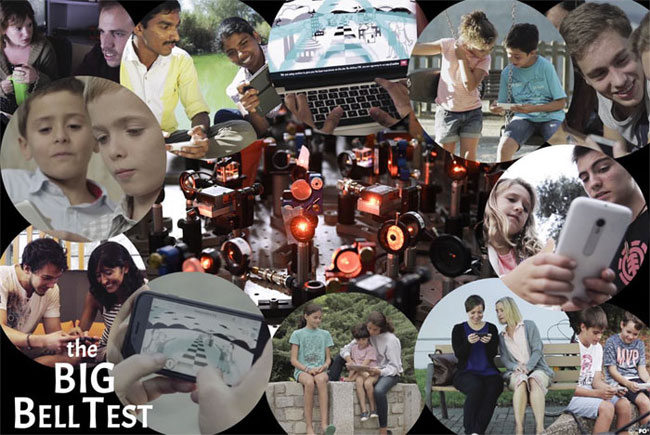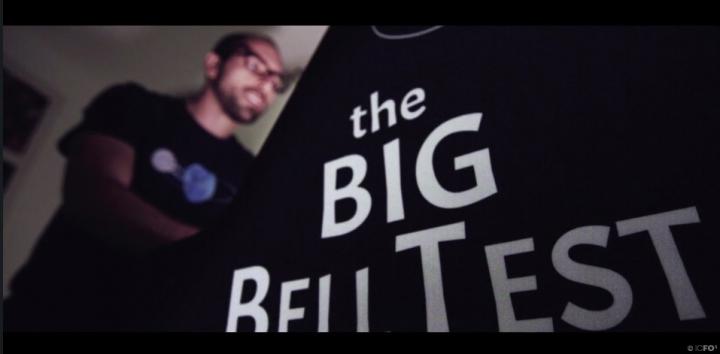Global physics experiment challenges principle of local realism with the help of 100,000 volunteers.
BARCELONA, Spain, June 14, 2018 — Results have been published from a set of first-of-its-kind quantum physics experiments, known as the BIG Bell Test, which took place on Nov. 30, 2016. Led by the Institute of Photonic Sciences (ICFO), the BIG Bell Test recruited 100,000 participants worldwide to contribute unpredictable sequences of zeros and ones (bits) through an online video game. Using smartphones and other internet-connected devices, participants on five continents contributed more than 97 million bits.

The BIG Bell Test Initiative, Nov. 30, 2016. Courtesy of ICFO.
The bits were routed to laboratories in Brisbane, Shanghai, Vienna, Rome, Munich, Zürich, Nice, Barcelona, Buenos Aires, Concepción (Chile), and Boulder, Colo.
Twelve labs around the world each carried out a different experiment (ICFO carried out two) to test local realism in different physical systems and other concepts related to realism. According to ICFO researchers, the obtained results disagree with Einstein’s worldview, close the so-called freedom-of-choice loophole for the first time, and demonstrate several new methods in the study of entanglement and local realism.
The results of the experiments confirm the violation of Bell inequalities by a more rigorous methodology than before and show that participatory sciences can play a useful role.
The principle of local realism states that two distant objects can only have limited correlations: Events that one of the two objects undergo cannot be correlated to the other beyond a certain degree. John Stewart Bell formulated this limit between physical objects in mathematical inequalities.
However, quantum objects do not follow this rule. In fact, events between quantum particles are correlated, wherever they are in the universe. This observation violates Bell inequalities and therefore the principle of local realism. To explain this phenomenon, physicists in the early 20th century, including Einstein, hypothesized that unknown physical parameters existed, such that the constraint imposed by inequalities would be correct all the same.
Until now, researchers have only managed to demonstrate the violation of Bell inequalities using data generated by quantum systems to set the parameters for their experiments. To perform experiments that did not use a quantum system to test quantum physics, the 100,000 “Bellster” recruits contributed bits generated randomly by a nonquantum mechanism.

For the first time, the thousands of decisions that each experiment requires were taken directly by humans, and not by machines. For this, the 13 experiments spread among 12 labs had the help of more than 100,000 people. Courtesy of ICFO.
In a Bell test, pairs of entangled particles such as photons are generated and sent to different locations, where particle properties including the photons’ colors or time of arrival are measured. If the measurement results tend to agree, regardless of which properties are measured, it implies that either the measurement of one particle instantly affects the other particle, or that the properties never really existed, but were created by the measurement itself. Either possibility contradicts local realism — Einstein’s view of a universe independent of our observations, in which no influence can travel faster than light.
ICFO contributed to the BIG Bell Test with two experiments. The first team performed a Bell test using entanglement between a single photon and a trapped cloud with millions of atoms (two very different objects). The second team performed a Bell test using entanglement between two single, different-colored photons generated with a solid-state photon pair source.
More information about the ICFO experiments is available here.
The results of the BIG Bell Test were published in Nature (doi:10.1038/s41586-018-0085-3).